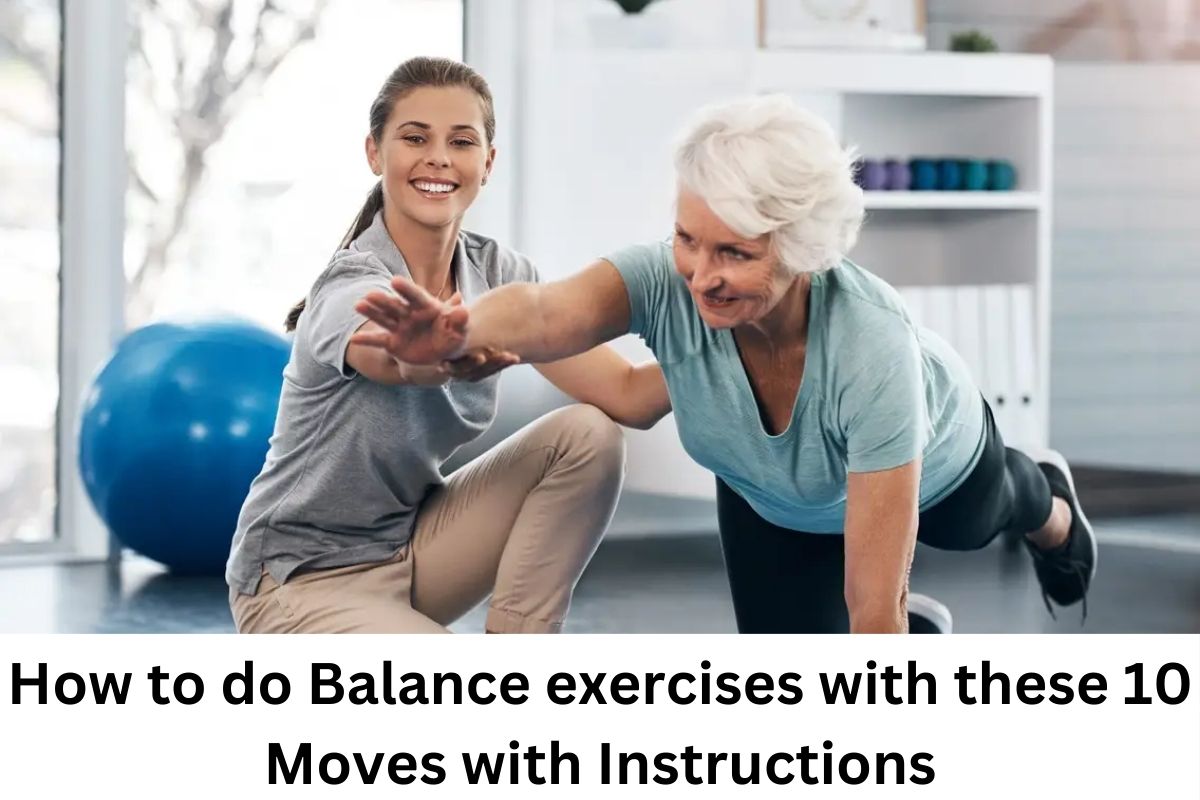How to do Balance exercises with these 10 Moves with Instructions :-The ability to maintain a healthy balance is essential at any age, but it becomes even more essential as one gets older. You will be able to keep your mobility, lower the chance of falling, and continue to be active and independent with its assistance. Still, about forty percent of people in their latter years struggle with balance issues. The good news is that physical activity can help improve balance that is poor.
How to do Balance exercises with these 10 Moves with Instructions
- To your good fortune, there are methods available to enhance your stability. Here are ten exercises that can help you improve your balance and maintain your stability when you are standing.
Advertisement
1 . Standing on one foot
- It’s possible that having the capacity to stand on one foot for twenty seconds is a sign of healthy brain function and adequate balance. Additionally, it has the potential to improve your equilibrium. One session of standing on one leg may be enough to improve your balance, according to the current research.
- To perform a single-leg stand, here is one technique to achieve it
- Position your feet so that they are either together or a few inches apart.
- Maintain a straight back and a downward posture with your shoulders.
- Both hands should be used to hold the back of a chair that is stable.
- While doing so, carefully lift one foot off the ground.
- While you are lifting, bend your knee back at a right angle of ninety degrees.
- Your goal should be to maintain the position for ten seconds.
- Reposition your foot so that it is on the ground.
- You should perform the maneuver ten to fifteen times on each foot.
- When performing this exercise, you can increase the difficulty by either holding the chair with one hand or by closing your eyes while you are performing it.
2 . Heel-to-toe walking
- It is recommended by the National Institute on Aging (NIA) that individuals improve their balance and stability by walking from heel to toe. In order to walk from heel to toe.
- Take a stance with your arms extended at your sides.
- In addition to holding your shoulders back, tighten the muscles in your stomach.
- Proceed in a straight line, with one foot placed directly in front of the other, heel to toe, and take steps in a straight line.
- First, your heel should make contact with the ground as you take a stride, and then your toes should follow suit.
- Walking heel-to-toe alongside a wall is an option for you to consider. After that, if you feel like you need additional support, you can rest one hand on the wall.
Advertisement
3 . Balance walking
- Stand with your feet at about shoulder-width apart.
- Your shoulders should be held back while you extend your arms out to the sides of your body.
- Engage or squeeze your abdominal muscles.
- Focus your attention on a focal topic that is in front of you.
- Raise your right knee and take a significant step forward in your movement.
- Make the same motion with your left knee, and keep walking in a straight path until you reach your destination.
- It is necessary to perform each overreaching step twenty times.
- At the same time that you are walking, you can make this exercise more difficult by looking from left to right without moving your head.
4. Using a stability ball
- It is possible that incorporating a stability ball into your workout program is just what you require in order to improve your balance. Furthermore, there is evidence to suggest that the utilization of this workout item may enhance your stability by activating the muscles in your core.
- As a means of testing your equilibrium and coordination, you might want to consider exchanging your workplace chair for a stability ball. Alternatively, you can use it with workouts that are suitable for beginners, such as wall squats.
Advertisement
5. Climbing stairs
- In addition to being beneficial to your heart, climbing stairs is an activity that strengthens the muscles in your lower body, particularly your glutes and quadriceps. Additionally, studies indicates that climbing stairs may have a beneficial effect on your equilibrium.
- The benefits of stair climbing workouts performed on a weekly basis in healthy seniors were investigated in a study. After a period of two months, the individuals exhibited improved structural balance. Due to this greater stability, it may be possible to avoid falling.
6. Biking
- Improving one’s balance could be as simple as learning how to ride a bicycle. According to the data, older persons who ride a bike for at least one hour every week may experience an improvement in their balance.
- You may find that cycling is a worthwhile activity because it provides a multitude of extra advantages.
Advertisement
7. Stretching
- Your flexibility and range of motion will grow as a result of static and dynamic stretching, which can further improve your balance. One study indicated that older persons who participated in a lower-body stretching exercise for a period of ten weeks experienced improvements in their balance.
8. Yoga
- There are a multitude of benefits associated with practicing yoga, ranging from improved balance to enhanced flexibility. The traditional practice includes a series of postures that are designed to stretch and strengthen muscles, which in turn helps you to keep your balance.
9. Tai chi
- Movements that are soft in nature are used in tai chi to increase both muscle strength and flexibility. In addition, it has the potential to improve balance and lower the risk of falling among persons with Parkinson’s disease and older adults.
- It’s possible that the age-old technique can even assist senior citizens in overcoming their fear of falling.
Advertisement
10. Pilates
- Core strength can be developed through the use of low-impact movements in Pilates. Moreover, studies have shown that activities that focus on strengthening the core might help enhance stability.
- Among older persons, a Pilates program that lasted for a period of twelve weeks was found to improve both static and dynamic postural balance, as well as functional mobility.
Advertisement



